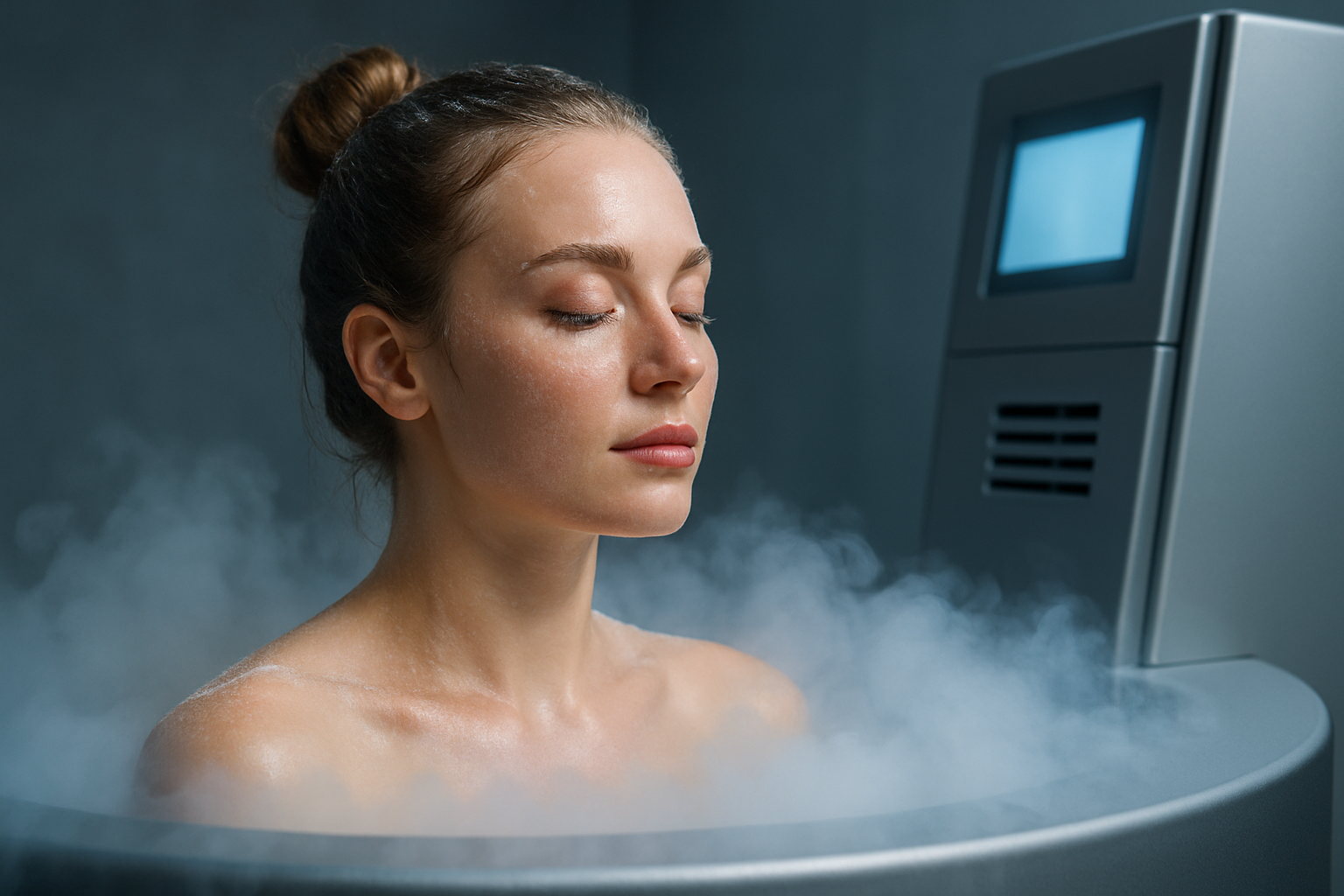Cryotherapy: The Cold Revolution in Beauty and Fitness
In the ever-evolving world of beauty and fitness, a chilling new trend has emerged, captivating enthusiasts and experts alike. Cryotherapy, once reserved for elite athletes and medical treatments, has now become a sought-after practice in wellness circles. This innovative approach harnesses the power of extreme cold to rejuvenate the body and mind, promising a range of benefits from enhanced recovery to improved skin health. As the popularity of cryotherapy surges, it's transforming the landscape of self-care and pushing the boundaries of what we thought possible in our pursuit of wellness and beauty.

The principle behind cryotherapy is based on the body’s natural response to cold. When exposed to extremely low temperatures, typically between -110°C to -140°C (-166°F to -220°F), the body initiates a survival mechanism. Blood vessels constrict, redirecting blood flow to vital organs. This process triggers the release of anti-inflammatory molecules and endorphins, the body’s natural pain relievers.
Whole Body Cryotherapy: A Chilling Experience
Whole Body Cryotherapy (WBC) has gained significant traction in recent years. During a WBC session, individuals enter a cryochamber or cryosauna, exposing their entire body (except the head) to frigid temperatures for two to four minutes. The chamber uses liquid nitrogen or refrigerated cold air to achieve these extreme conditions.
The effects of WBC on the body are multifaceted. Proponents claim it can reduce muscle soreness, accelerate recovery from intense workouts, and even boost metabolism. Studies have shown that WBC can decrease inflammatory markers in the blood, potentially aiding in recovery from exercise-induced muscle damage.
Moreover, the sudden cold exposure stimulates the production of norepinephrine, a hormone that can improve mood and energy levels. This has led to interest in cryotherapy as a potential treatment for mood disorders and chronic fatigue syndrome.
Cryofacials: The Cold Face of Beauty
In the beauty industry, cryotherapy has found its niche in the form of cryofacials. This treatment involves applying controlled streams of vaporized liquid nitrogen to the face and neck. The extreme cold causes blood vessels to constrict and then dilate, which is believed to boost collagen production and improve skin elasticity.
Cryofacials are touted for their ability to reduce puffiness, minimize pores, and give the skin a tighter, more radiant appearance. The cold also numbs nerve endings, potentially reducing the appearance of fine lines and wrinkles. Unlike traditional facials that can leave the skin red and irritated, cryofacials often result in an immediate glow with no downtime.
Localized Cryotherapy: Targeted Treatment
While whole-body and facial cryotherapy have garnered much attention, localized cryotherapy is proving to be equally valuable. This technique involves applying cold to specific areas of the body using a handheld device. It’s particularly popular among athletes for treating injuries and reducing inflammation in targeted areas.
Localized cryotherapy can be used on joints, muscles, and even the scalp. In beauty treatments, it’s being explored for its potential to reduce cellulite and aid in body contouring. The concentrated cold is believed to boost circulation in the treated area, potentially leading to improved skin texture and reduced fat deposits.
The Cryotherapy Market: A Cool Business
The global cryotherapy market has experienced significant growth in recent years. According to market research, the industry was valued at $206.6 million in 2020 and is projected to reach $319.9 million by 2025. This growth is driven by increasing adoption in sports medicine, pain management, and the beauty industry.
Cryotherapy centers are popping up in major cities worldwide, offering services ranging from whole-body treatments to targeted therapies. The market is also seeing an influx of at-home cryotherapy devices, allowing consumers to incorporate cold therapy into their daily routines.
However, as with any rapidly growing industry, regulation and standardization remain challenges. The FDA has not yet cleared or approved whole-body cryotherapy devices as safe and effective for medical purposes, highlighting the need for more research and regulatory oversight.
Risks and Considerations
While cryotherapy offers exciting possibilities, it’s not without risks. Prolonged exposure to extreme cold can lead to frostbite, and individuals with certain health conditions like high blood pressure or heart problems should consult a doctor before trying cryotherapy.
There’s also the question of long-term effects. While short-term benefits have been observed, the long-term impact of regular cryotherapy sessions is still being studied. Some experts caution against overuse, suggesting that the body’s natural recovery processes shouldn’t be constantly interrupted by artificial interventions.
As cryotherapy continues to gain popularity, it’s crucial for consumers to approach it with an informed perspective. While the potential benefits are intriguing, more research is needed to fully understand its effects and determine optimal usage guidelines.
In conclusion, cryotherapy represents a fascinating intersection of ancient wisdom and modern technology in the pursuit of health and beauty. As research progresses and technology improves, we may see cryotherapy become an integral part of wellness routines, offering a truly “cool” approach to self-care. Whether it’s a passing trend or a revolutionary treatment, cryotherapy has certainly brought a breath of fresh, frigid air to the world of beauty and fitness.





